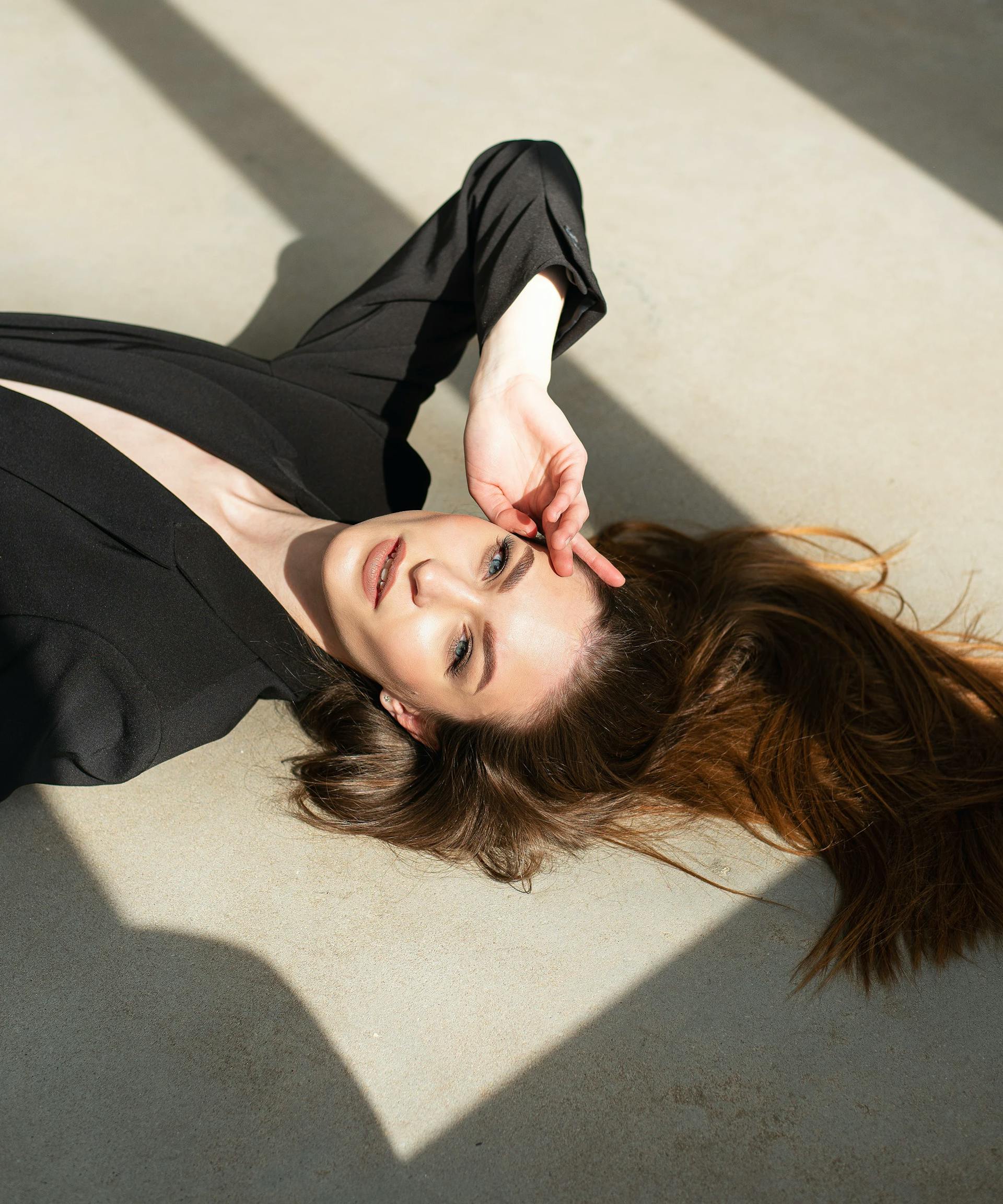Why Blow-Drying Your Hair Could Actually Be Beneficial
Most of us associate using heat on our hair with dryness and damage. But what if the heatless alternative of air-drying your hair is actually worse for its overall health than using a blow dryer?

In the age of social media, it’s becoming increasingly tricky to navigate all the beauty, haircare, and skincare tips out there. Sure, it’s great that we have access to so many different perspectives, but it also means there is lots more information to sift through, often leaving us overwhelmed and unsure of what’s true.
One of the biggest debates in hair care has been air-drying your hair versus blow-drying it – a debate that has been increasingly confusing given how many so-called hair experts have warned of the potential damage blow-drying your hair may cause, including split ends, breakage, and dryness.
But what if everything we’ve ever been taught about hair care is wrong?
The Anatomy of Hair
To understand the healthiest ways to style our hair, we must first understand our hair’s anatomy. According to a study by the Department of Physics and Astronomy at McMaster University in Ontario, Canada, human hair is primarily made up of keratin and consists of several layers, such as the cuticle, the cortex, and the medulla.
The cuticle is the outermost layer formed by flat, overlapping cells similar to the formation of scales. In straight hair, these cells are usually more tight-knit, and in curly and coily hair types, they’re more loosely arranged.
The middle layer of hair is called the cortex, which contains spindle-shaped cells that consist of keratin proteins and structural lipids. There’s also the medulla, the innermost layer typically present in coarse hair that is comprised of “loosely packed cells in a disorganized manner.”
Finally, there is the cell membrane complex, which is a material that holds the hair together. The three types of cell membrane complexes that exist include the cuticle-cuticle, cuticle-cortex, and cortex-cotex.
Although it may seem obvious, hair that is long, full, shiny, and manageable enough to be finger-combed is considered healthy, compared to hair that is dull, irregular in length because of split ends, frizzy, rough, and tangled, which is not.
What Happens When You Air-Dry
Wet hair is weak hair. And although we’re not strangers to the consequences of using heat on our hair, air-drying may cause damage to the membrane complex layer, which is the innermost layer of a hair strand.
According to expert stylists, because air-drying takes hours for your hair to completely dry, your strands are “continuously exposed to water.” So, when we touch or comb our fingers through our hair while it's wet and fragile, the chances of it breaking are exacerbated. In addition, "hair can absorb up to 30% of its own weight in water," making it heavy and more susceptible to stretching from brushing and styling while damp.
Air-drying can make your hair frizzy, create build-up, and may even cause mildew.
As if breakage weren’t bad enough, air-drying can make your hair frizzy, create build-up depending on the hardness of your water, and, especially for those with thick and curly hair types, may even cause mildew, leading to scalp problems.
"Hair that stays wet or damp for a long period can attract bacteria and fungus, especially if you have very dense hair," explains celebrity hairstylist and texture hair educator Jennie Roberts. “Afro-textured hair, if left to dry naturally, can take days, which can lead to scalp problems."
Even a study published in the National Library of Medicine affirmed blow-drying your hair may be better than air-drying. The study assessed changes in the structure, moisture content, and hair color after shampooing and drying it with a hair dryer at various temperatures. As a result, the study concluded that while hair dryers cause “more surface damage than natural drying, using a hair dryer at a distance of 15 cm with continuous motion causes less damage” overall.
Tips on How To Blow-Dry Your Hair Properly
While it is possible to damage your hair using a blow dryer, the pros of using one seem to outweigh the cons, especially when used properly!
According to experts, the best way to dry your hair begins with a salon-quality hair dryer. No, this doesn’t mean you must drop $400 on a Dyson. You can buy some great alternatives for much less, including the T3 AIRELUXE, which includes multiple temperature and pressure options.
Next, experts suggest using a microfiber towel to pat dry and gently squeeze excess water out of your hair. Avoid swishing your hair "back and forth, as that can also lead to breakage.”
Another key to damage prevention is using a leave-in conditioner with a heat protector, such as the 7SECONDS Detangler from Unite. Be sure to apply your products from the middle of your strands to the ends, avoiding the scalp.
Then, setting your hair dryer to the lowest heat and speed setting, use your hands to dry your hair in sections, holding the blow dryer about six inches away from your hair until it is 80% dry. Experts recommend starting with the ends of your hair first and ending with your scalp, as the ends hold the most moisture.
Finally, using a soft-bristled brush, gently brush out your hair and style as usual.
Closing Thoughts
Ultimately, you can damage your hair by blow-drying it and by air-drying it, so whichever method you choose, be sure to do it with the proper care! Although there is no one-size-fits-all solution to properly treating, caring for, and styling your hair, weighing all the available options based on your hair type could help you achieve your healthiest hair yet.
Support our cause and help women reclaim their femininity by subscribing today.